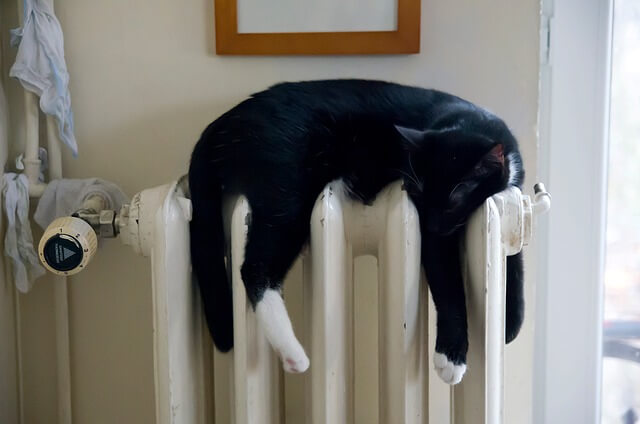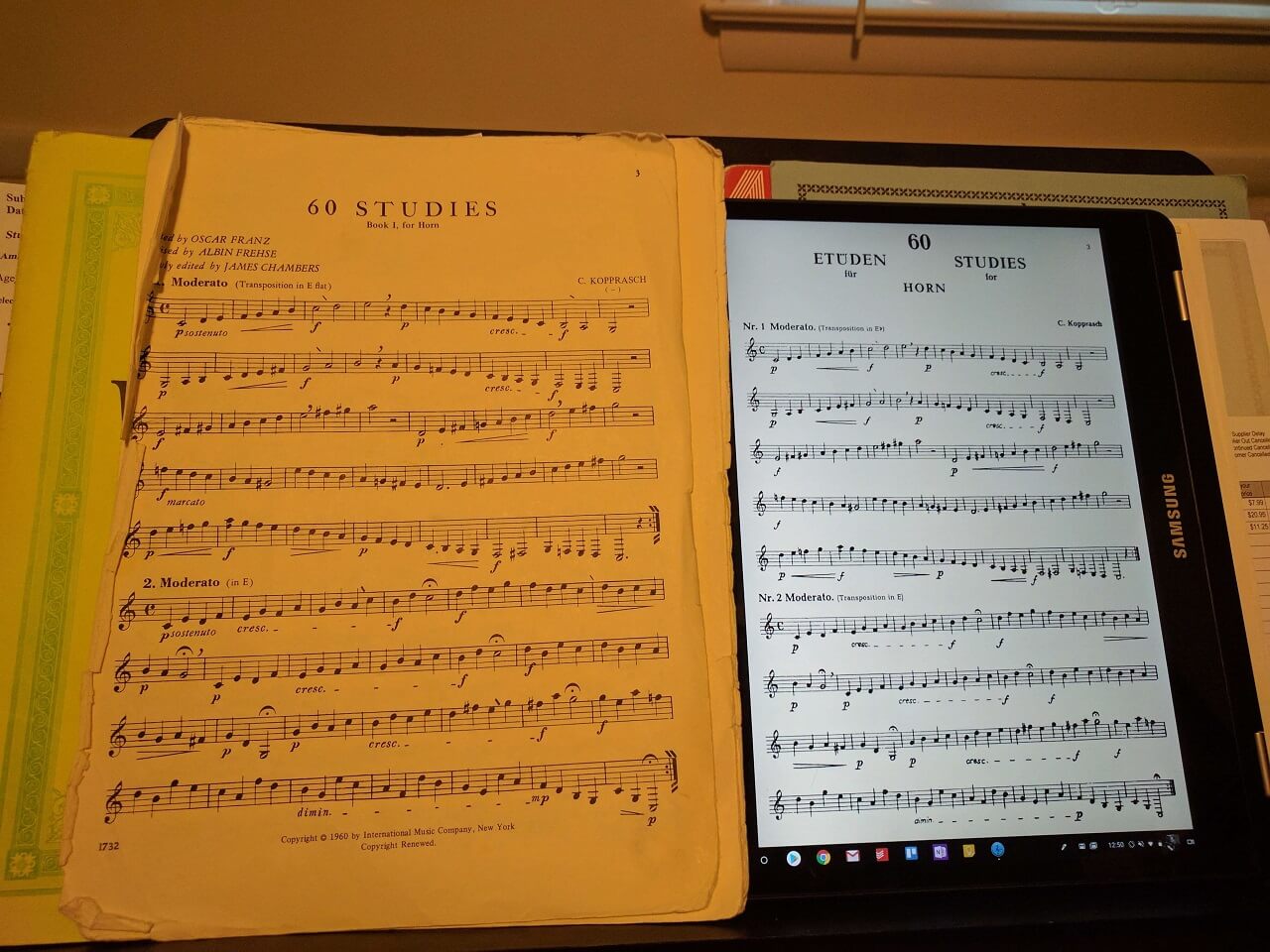Most brass players know the importance of a good warm-up. This is probably the single most important session of playing that you do each day since it gives you a chance to focus on the basics of playing.
If you’re curious about some of the exercises that I use with my students, I have some of them over on my French horn exercises page*. I’ve got almost every aspect of playing at least somewhat covered, and I’ve got plans to add even more over the coming weeks.
While my own warm-up routine has varied quite a bit over the years, lately I’m been toying with a more flexible routine. My normal, “long form” warm-up includes a wide variety of exercises and drills, but I’ve started experimenting with a much shorter, more condensed routine that I’m calling a Minimum Viable Warm-up (MVW), which includes only essential fundamentals, and has been great for trying to get productive practice with a 1-year old crawling (and walking) around!
The Minimum Viable Warm-Up
The Concept
The concept of the MVW is pretty simple. Go from cold to prepared for any literature (within reason) in the shortest amount of time.
This means that it starts out quite basic, but then expands quickly to cover all ranges and dynamics (where practical). While I do cycle some things over the course of days, in general, this completed warm-up covers 4 octaves and a very wide dynamic range.
This is designed as the first playing session of the day. If you have time to do a good warm-up, you really shouldn’t need too much before a rehearsal or concert later on in the day.
Exercises to Include
In general, I try to have a little bit of everything in my MVW – long tones, flexibility, articulation, scales, etc., although the exact mix depends on several things (time, primarily, but also repertoire considerations).
Even though this routine at least touches on every aspect of playing, note that you shouldn’t need separate exercises for every aspect. Like I mention on my long tones page*, while primary aim of these exercises is to focus on airflow and support, they do make excellent articulation studies too! Accurate subdivision and a smooth, quick tongue stroke are required to a get a clean articulation at a slower tempo, especially in the extreme registers, so make sure to keep your ears open and your brain engaged!
In general, you’ll want to make sure that your MVW covers:
- Long tones/general sound production
- Articulation
- Harmonic series or lip slurs
- Scales/Arpeggios
And that’s it! You can certainly include other things, but remember that your ultimate goal is to play the minimum amount before you’re ready to go. There are lots of great resources for these exercises, but if you want to take a look at my suggestions, you can find them on my French horn exercises page.
Prioritize Fundamentals
Now that you’ve got the exercises, take a minute or two and arrange them in a sensible order.
For example, I usually start off with fundamental sound production and articulation exercises, then flexibility, and then other ancillary stuff last (dynamics, scales). This way, if I get interrupted or I run out of time I’ve at least covered the minimum that I need for my chops that day.
Remember, above all, that HOW you play exercises is far more important than WHICH exercise you play. Make sure you have your desired result in mind before you make a sound! If you don’t know what you want to sound like then you’re never able to observe your progress (or stagnation).
What NOT To Include
In general, you should probably stay away from practicing any sort of new skill or technique (lip trills, double/triple tonguing, etc.) or from working on endurance in the MVW.
While you should make time to practice these skills, if you are crunched for time in your warm-up there are likely better uses for your time than spending 2-4 minutes struggling with a new, unfamiliar skill. If it’s something you need today, then you’re probably out of luck if you can’t do it already – an extra 2 minutes will only stress you out!
Save this stuff for a later practice session or when you have a bit more time.
When To Use Your MVW?
Ideally, you never need to use your MVW – since you’ll always wake up in plenty of time for any early-morning rehearsal or get to the rehearsal hall with hours to spare! However, sometimes life doesn’t work like that.
Like I mentioned above, I’ve had to use my MVW when I’ve been crunched for practice time due to work and/or child obligations, and it has been quite useful.
Not only does it save me time before I can get to the music that I need to work on, but it also is a nice change of pace. I think for most brass players, this kind of mix-up can help to improve focus and reduce the danger of “zoning out” during those tough morning practice sessions.
The MVW isn’t just for hectic work schedules, though. It can also be useful as a very light maintenance routine on vacation (if you absolutely have to take your horn on vacation (I do!)), or a way to save your chops for a tough playing day (or week, or month).
Any questions about the Minimum Viable Warm-up? Feel free to ask them in the comments below!





